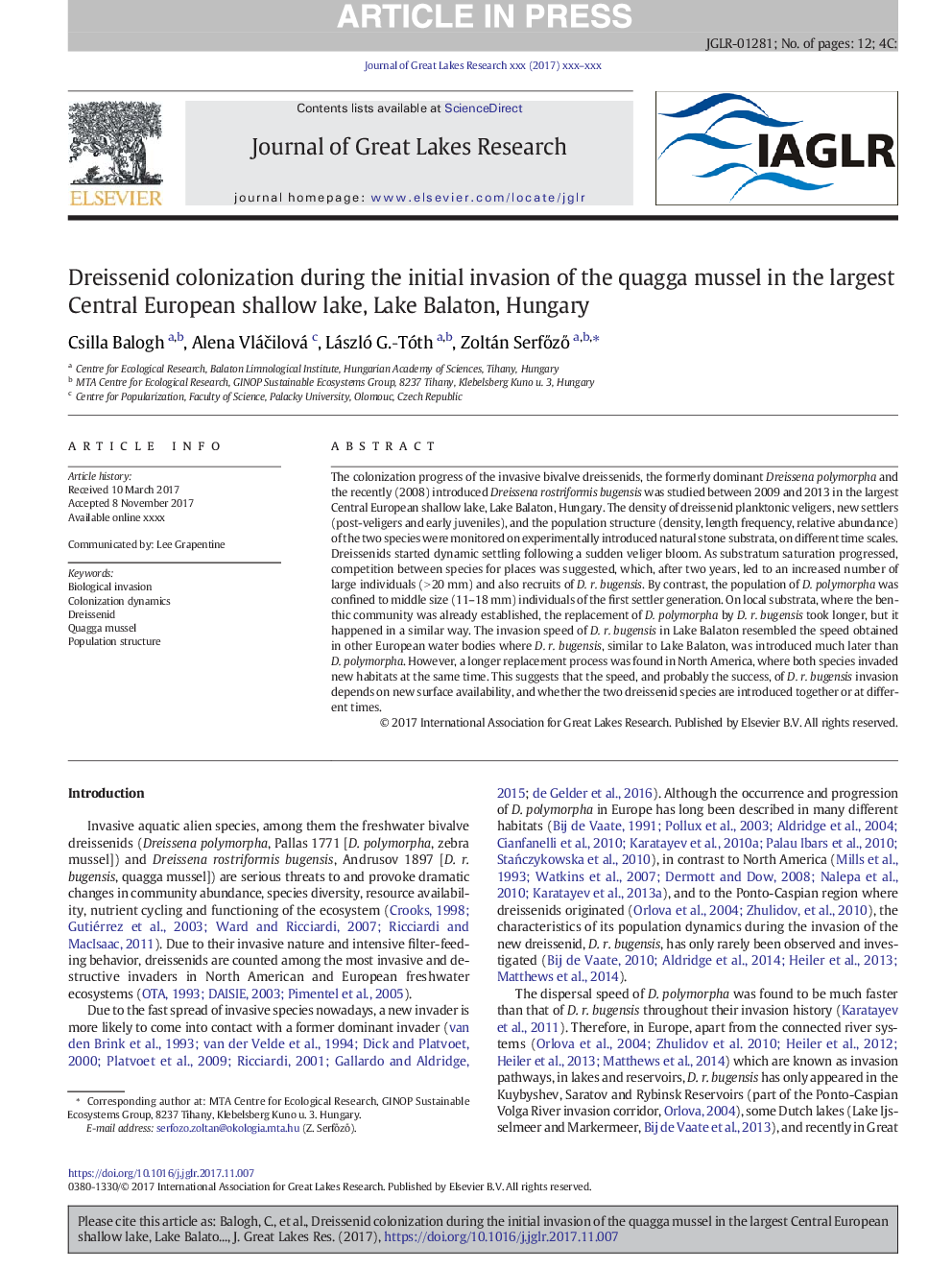| Article ID | Journal | Published Year | Pages | File Type |
|---|---|---|---|---|
| 8849160 | Journal of Great Lakes Research | 2018 | 12 Pages |
Abstract
The colonization progress of the invasive bivalve dreissenids, the formerly dominant Dreissena polymorpha and the recently (2008) introduced Dreissena rostriformis bugensis was studied between 2009 and 2013 in the largest Central European shallow lake, Lake Balaton, Hungary. The density of dreissenid planktonic veligers, new settlers (post-veligers and early juveniles), and the population structure (density, length frequency, relative abundance) of the two species were monitored on experimentally introduced natural stone substrata, on different time scales. Dreissenids started dynamic settling following a sudden veliger bloom. As substratum saturation progressed, competition between species for places was suggested, which, after two years, led to an increased number of large individuals (>Â 20Â mm) and also recruits of D. r. bugensis. By contrast, the population of D. polymorpha was confined to middle size (11-18Â mm) individuals of the first settler generation. On local substrata, where the benthic community was already established, the replacement of D. polymorpha by D. r. bugensis took longer, but it happened in a similar way. The invasion speed of D. r. bugensis in Lake Balaton resembled the speed obtained in other European water bodies where D. r. bugensis, similar to Lake Balaton, was introduced much later than D. polymorpha. However, a longer replacement process was found in North America, where both species invaded new habitats at the same time. This suggests that the speed, and probably the success, of D. r. bugensis invasion depends on new surface availability, and whether the two dreissenid species are introduced together or at different times.
Related Topics
Physical Sciences and Engineering
Earth and Planetary Sciences
Earth and Planetary Sciences (General)
Authors
Csilla Balogh, Alena VláÄilová, László G.âTóth, Zoltán SerfÅzÅ,
